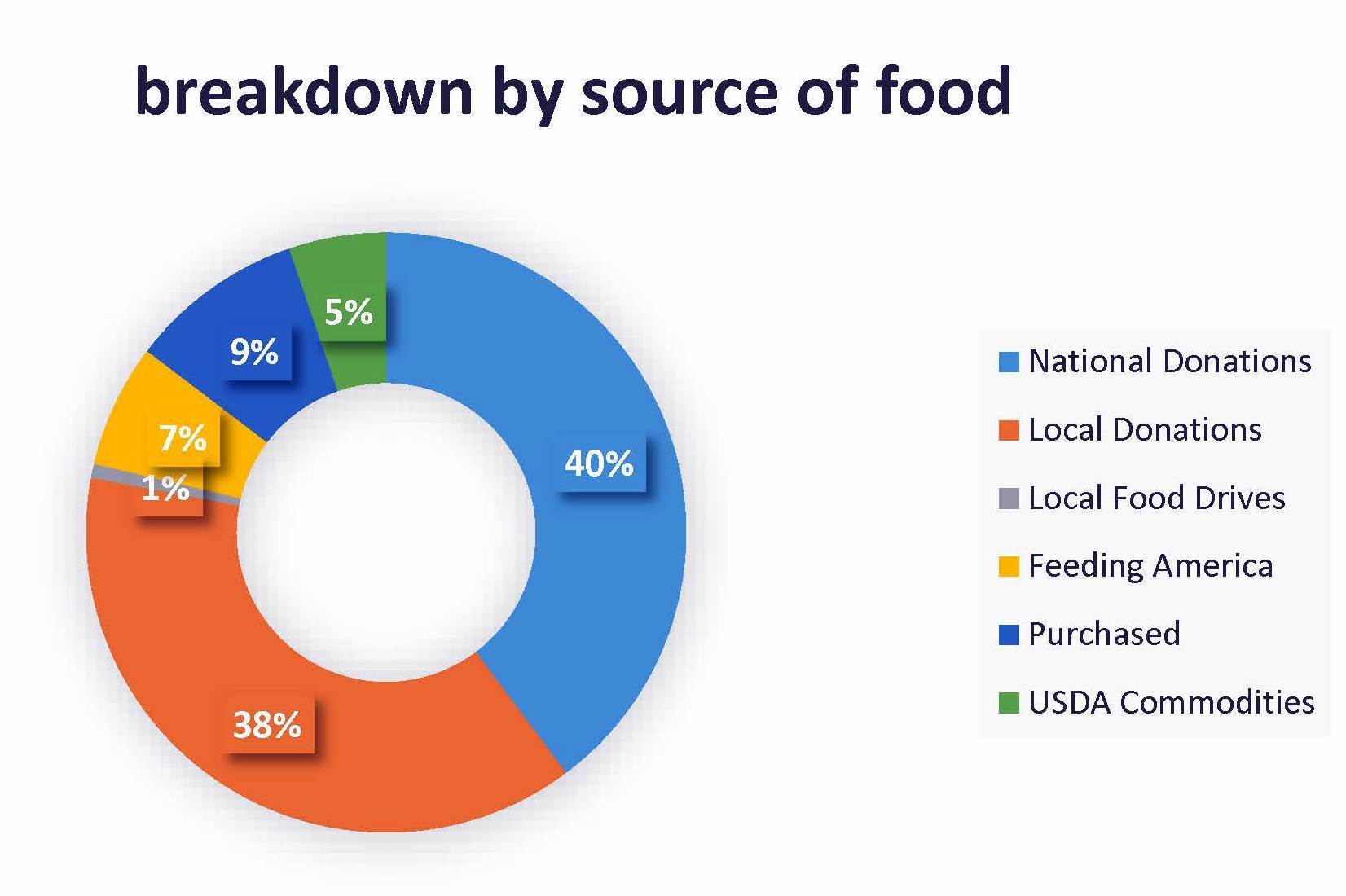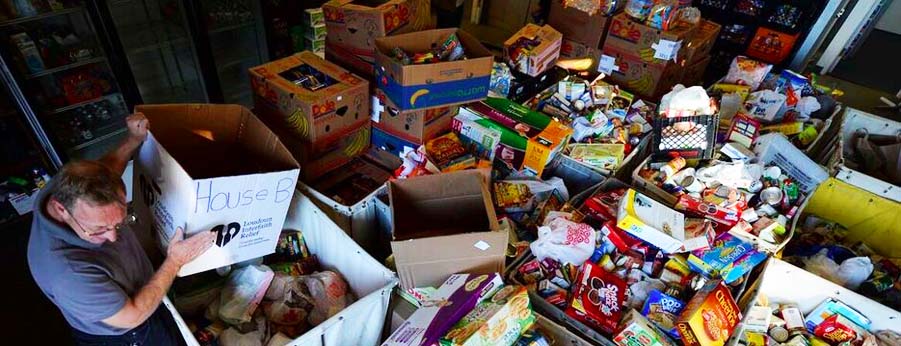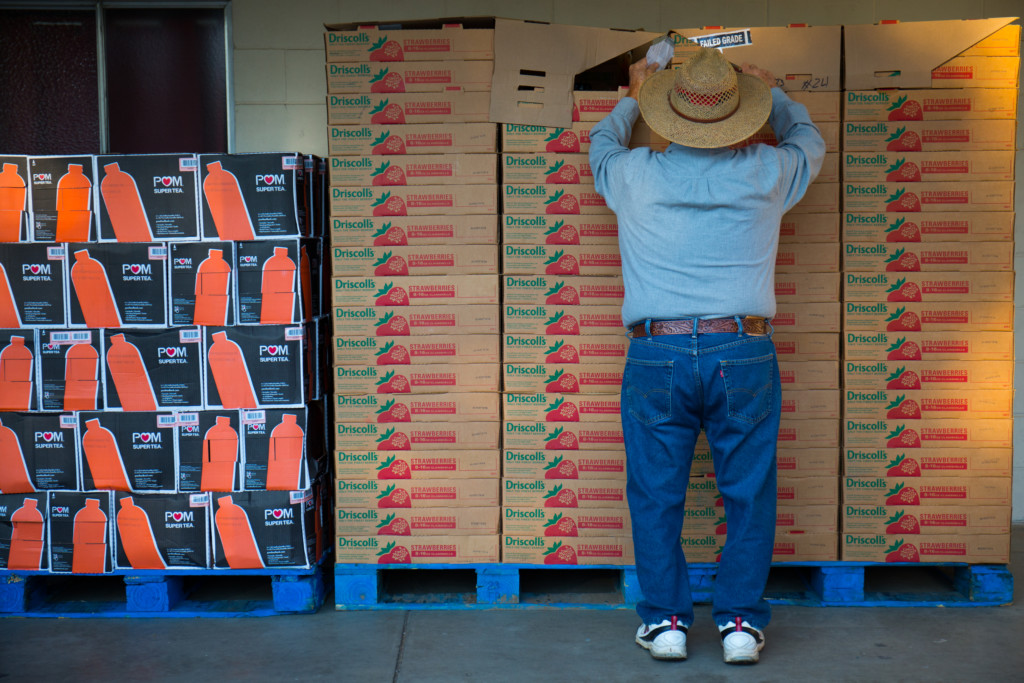Where Our Food Comes From
We obtain food inventory in three key ways — from donations, from the federal government, and through salvage, near expiration and other foods we source and purchase.


Donations
Are you as concerned about food waste as much as we are? The food bank runs a recovery route every day to assure that food that would otherwise go to waste is redistributed. We seek local, regional and national sources of food donations wherever we can. Thanks to Feeding America, we capture donations of food from many large food processors and distributors, too. Thanks to all our donors, more than 80% of the food we distribute is donated to us.

Purchased Food
Donations of canned food and dry goods are increasingly difficult to find. And as the composition of the food changes, the food bank must turn towards more purchased foods to make up the difference between what’s donated and what’s needed.
Financial support allows us to obtain foods rich in nutrition and consistent with wholesome meal preparation. These are foods like cereal, peanut butter, pastas, canned vegetables, soups and tuna. We assist rural schools with their BackPack programs and source foods for many agency distribution events, which often can only be accommodated by purchasing food. Getting fresh fruits and vegetables to families and the elderly often means obtaining produce from a variety of local, state and regional growers.
USDA
The Emergency Food Assistance Program (TEFAP) is a federal program of the U.S. Department of Agriculture (USDA). The food bank administers the distribution of foods like juices, canned vegetables, canned and frozen fruits, frozen tilapia, lamb and chicken, spaghetti sauce, pasta and rice. USDA commodities are distributed in seven counties by 17 food bank member agencies.
**We are a USDA distribution site**
In accordance with Federal civil rights law and U.S. Department of Agriculture (USDA) civil rights regulations and policies, the USDA, its Agencies, offices, and employees, and institutions participating in or administering USDA programs are prohibited from discriminating based on race, color, national origin, sex, disability, age, or reprisal or retaliation for prior civil rights activity in any program or activity conducted or funded by USDA.
Persons with disabilities who require alternative means of communication for program information (e.g. Braille, large print, audiotape, American Sign Language, etc.), should contact the Agency (State or local) where they applied for benefits.
Individuals who are deaf, hard of hearing or have speech disabilities may contact USDA through the Federal Relay Service at (800) 877-8339.
Additionally, program information may be made available in languages other than English.
To file a program complaint of discrimination, complete the USDA Program Discrimination Complaint Form, (AD-3027) found online at: http://www.ascr.usda.gov/complaint_filing_cust.html, and at any USDA office, or write a letter addressed to USDA and provide in the letter all of the information requested in the form. To request a copy of the complaint form, call (866) 632-9992. Submit your completed form or letter to USDA by:
(1) mail: U.S. Department of Agriculture
Office of the Assistant Secretary for Civil Rights
1400 Independence Avenue, SW
Washington, D.C. 20250-9410;
(2) fax: (202) 690-7442; or
(3) email: [email protected].
This institution is an equal opportunity provider.


